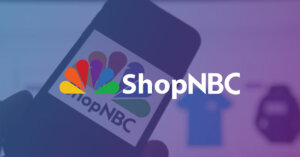SiteSpect Synopsis: All About Influencer Marketing
By Bill Cunningham
August 14, 2018
Share
If you spend any time on social media, chances are you’ve come across influencer marketing. The trend, where influential (read: high engagement) accounts develop relationships with brands to promote relevant products, offers unique benefits to brands, consumers, and content creators. How many times have you bought something off of a friend or colleague’s recommendation? The relationships that popular social accounts develop with their followers invoke the same type of trust, and brands are using that to find their audiences. In this SiteSpect synopsis, we’ll break down some recent articles to catch you up on the state of influencer marketing now. At the end, check out our suggested reading list.

Neil Patel’s “Definitive Guide to Influencer Targeting”
Neil Patel does a great job breaking down Influencer Marketing for those new to the idea, and he offers some guidelines for starting an influencer relationship. He writes, “You don’t usually trust a person at a cocktail party who comes up to you and brags about himself or herself and spouts fun facts about his or her personality to convince you to be a friend. But you often believe your mutual friend who vouches for that person. An influencer is the mutual friend connecting your brand with your target consumers.” People connect to brands and products increasingly through social media and personal interactions — influencer marketing helps brands reach potential customers based on interests and community.
There are a few things to keep in mind though, according to Patel. First, remember that to see any real impact, you’ll need to post consistently for at least 6 months. Influencer marketing is a longer term tactic. Second, make sure that the audience you target is relevant to you. If your influencer has a strong following of teens, but your product is men’s suits, that marketing is unlikely to take you anywhere. Check out Patel’s video for more tips when you start influencer marketing.
Hootsuite Offers Tips for Working with Influencers
Hootsuite’s Christina Newberry’s blog on influencer marketing raises interesting points about the creative you publish. When you partner with an influencer it’s because they have a dedicated community of highly engaged followers. The influencer has that community because of his or her own content — so you have to allow influencers to promote your products in a way consistent with their content. Newberry writes: “A social media influencer who has worked hard to build a following will not accept a deal that makes their own personal brand seem inconsistent. And, after all, influencers are content creation experts—you’ll get the best value from their work by allowing them to showcase those skills.”
Newberry also emphasizes the importance of the metrics you use. Followers aren’t everything, and in fact they can be misleading. Engagement is a much better way to measure the potential influence of a social media account — especially since with influencer marketing you’re after trust between your poster and their followers.
eMarketer Notes that Less is More
Reporter Jasmine Enberg interviews Laura Brinker, vice president of beauty brand partnerships at Influenster, about the evolution of influencer marketing. When influencer marketer first gained traction, brands tended to leap at “macro influencers” — Instagram accounts with over 101k followers. However, as influencer marketing evolves and consumers become more savvy and discerning about who they interact with and engage with on social media, “micro influencers” — those with followers between 10k – 100k — have become more and more valuable.
The Guardian’s Case Study of an Influencer Campaign Done Right
This fascinating case study reported by Scarlett Conlon demonstrates the measurable ROI for influencer marketing. In this case, one blogger with 344k Instagram followers and high engagement featured a post where she wore a green, flower-printed dress from new designer Kitri before it went on sale. As soon as the dress became available it sold 200 units in 45 minutes, and had an 800 person waitlist. This marketing tactic has additional benefits as well. Conlon writes, “Kitri is responsive. Its strategy of producing limited quantities of its designs also allows the label to generate additional drops in an agile manner when interest … picks up, without the risk of leftover stock.” Sarah Owen from WGSN adds, “Influencers democratised aspiration … Once considered a fleeting marketing tool, the influencer ecosystem has proved to be a longstanding, viable segment for brands seeking to convert likes to sales, all the while increasing brand recognition.”
Want More? Check Out These Articles
- ConversionXL “The Data-Driven Marketer’s Guide to Influencer Marketing”
- New York Times, “Meghan Markle: The Biggest Influencer of All?”
- SocialBakers, “Instagram Engagement: Everything You Need to Know”
- Social Media Today, “10 Common Reasons Why Influencer Marketing Campaigns Fail”
To learn more about SiteSpect, visit our website.
Share
Suggested Posts
Subscribe to our blog:





